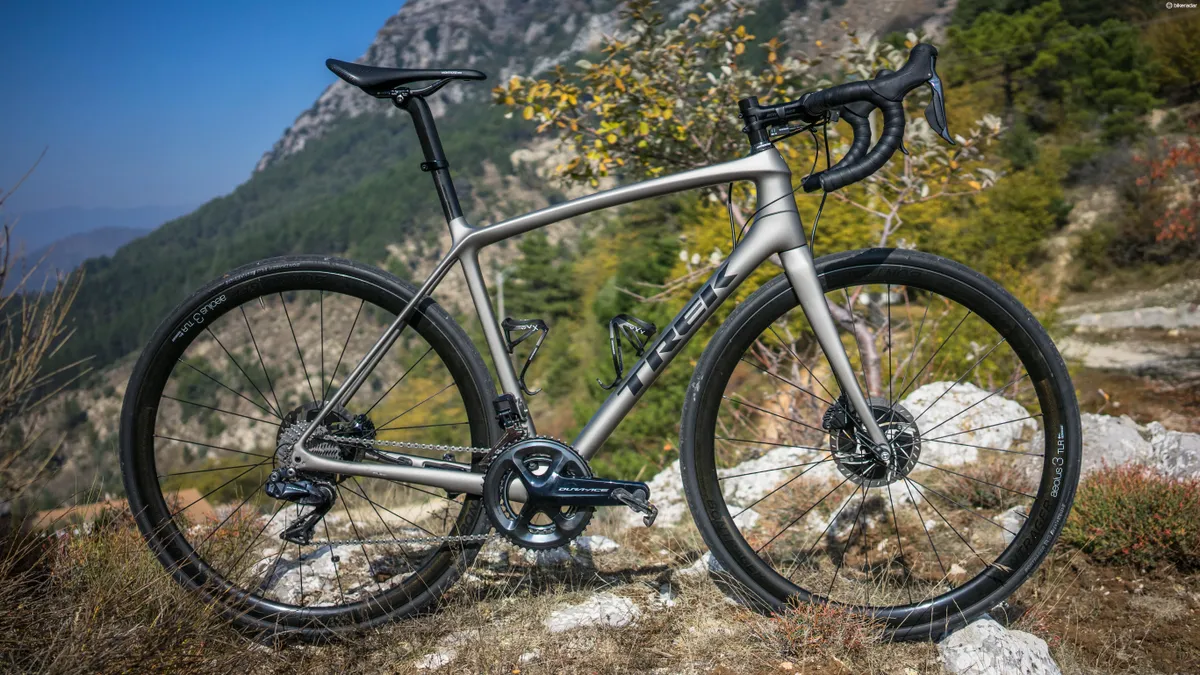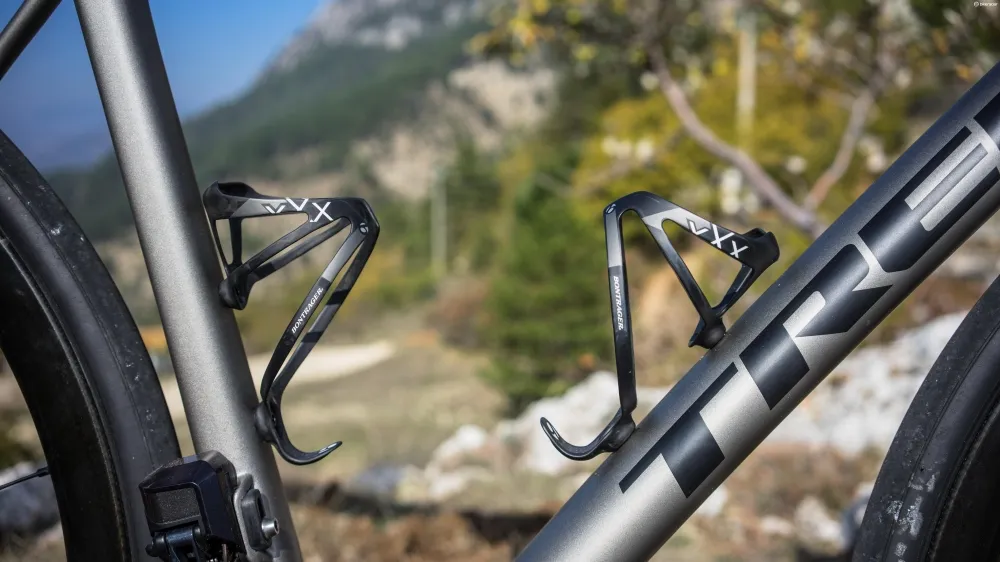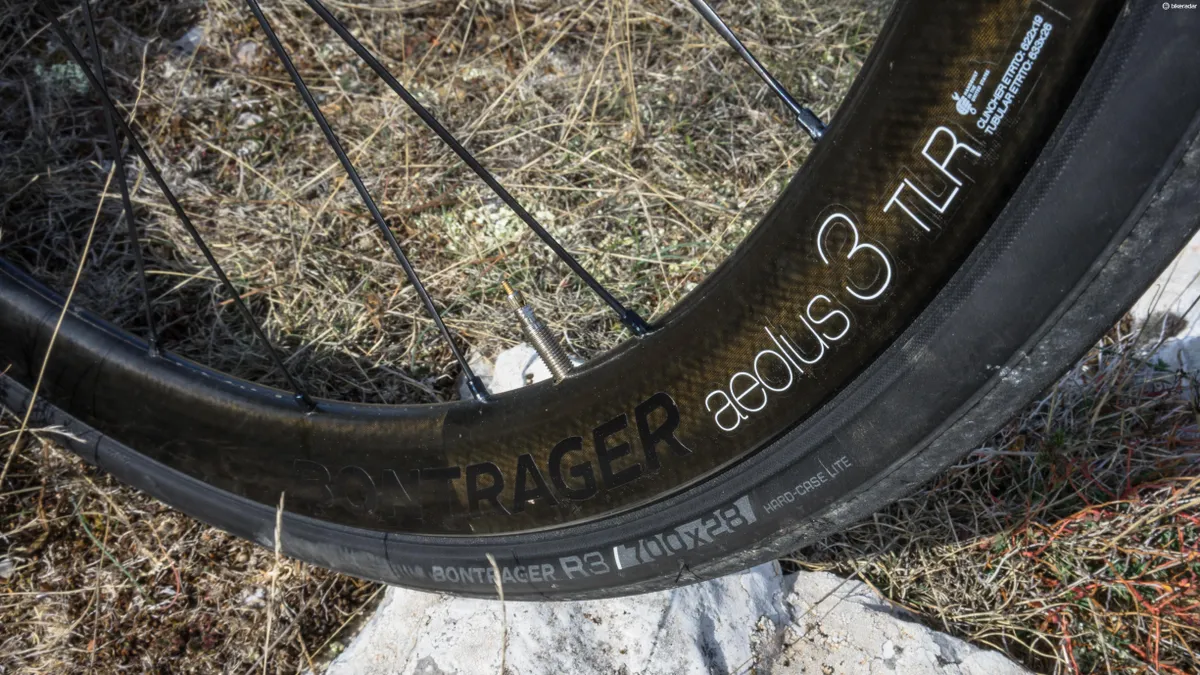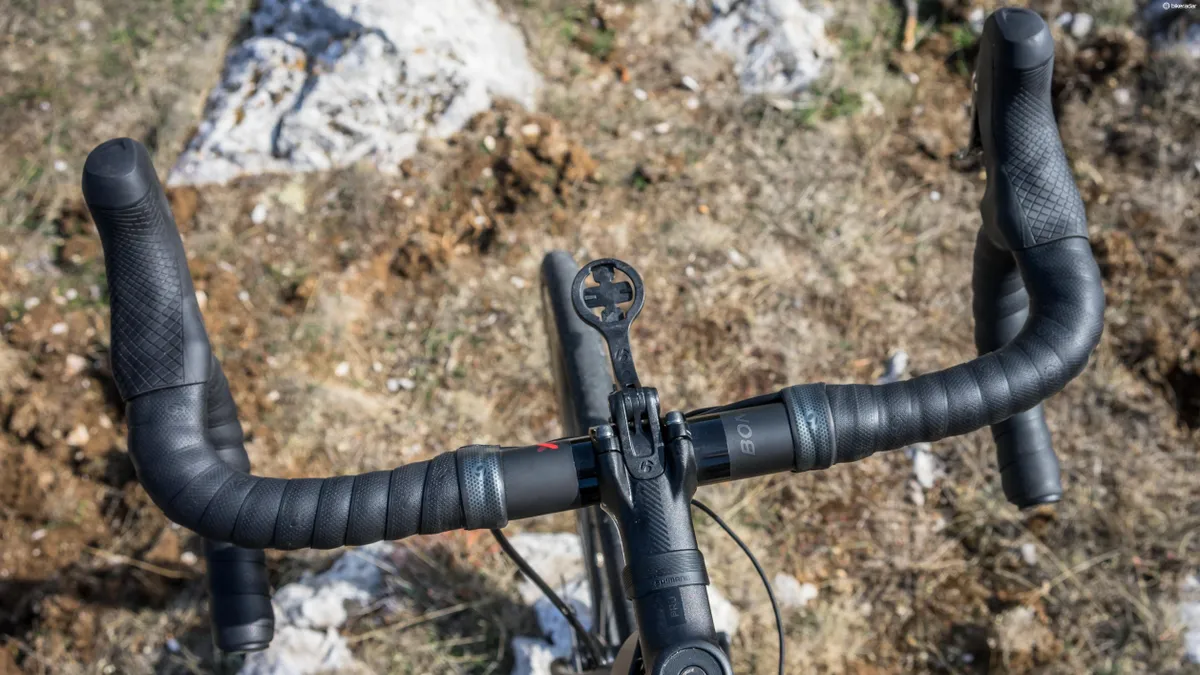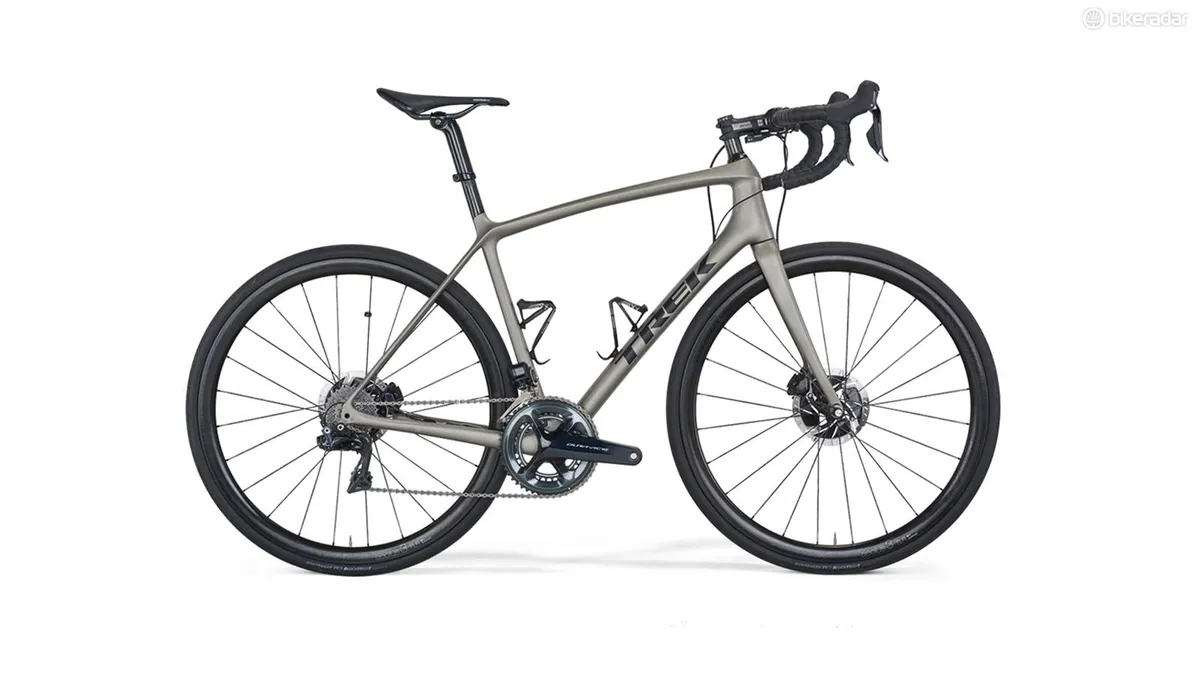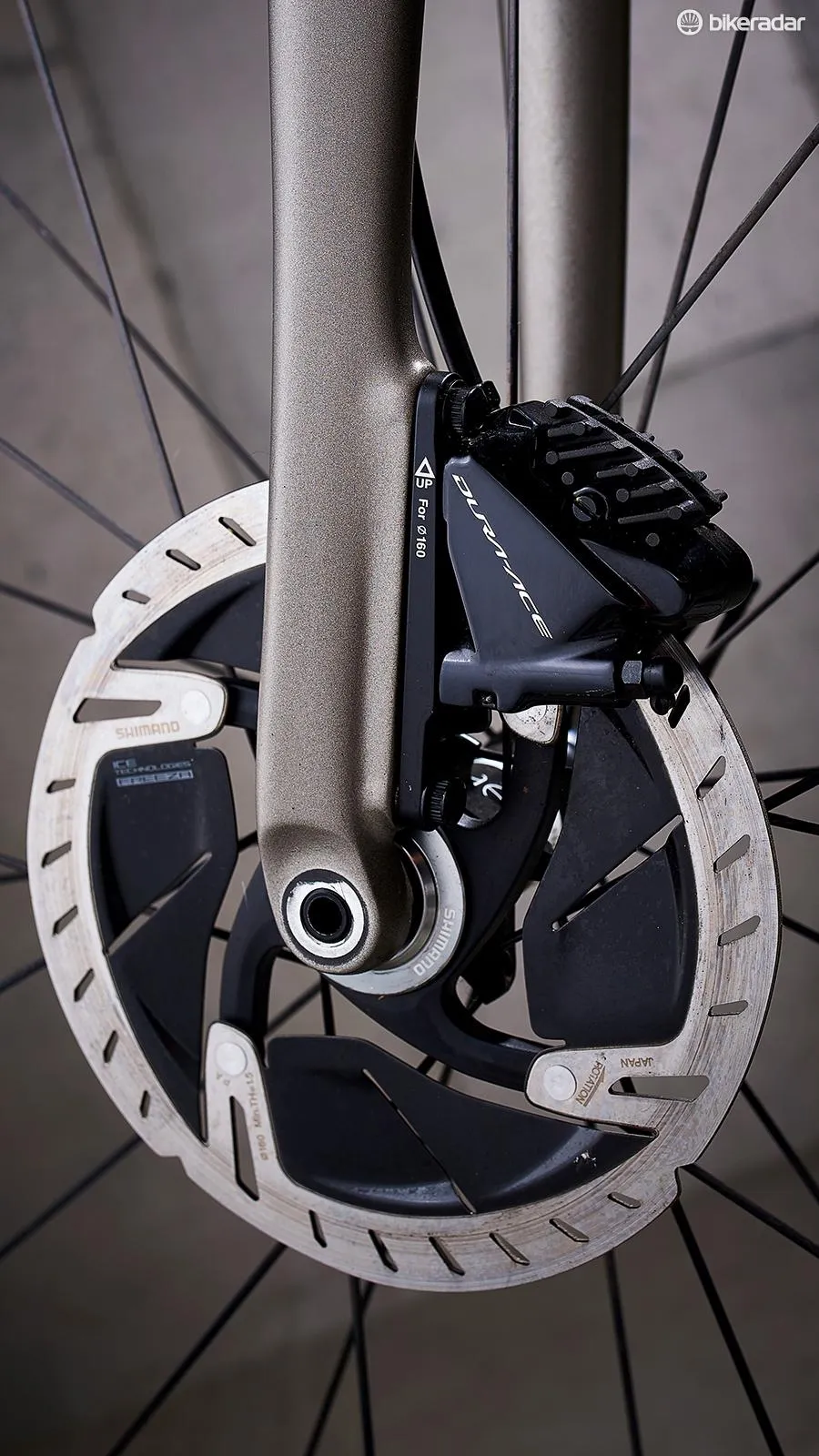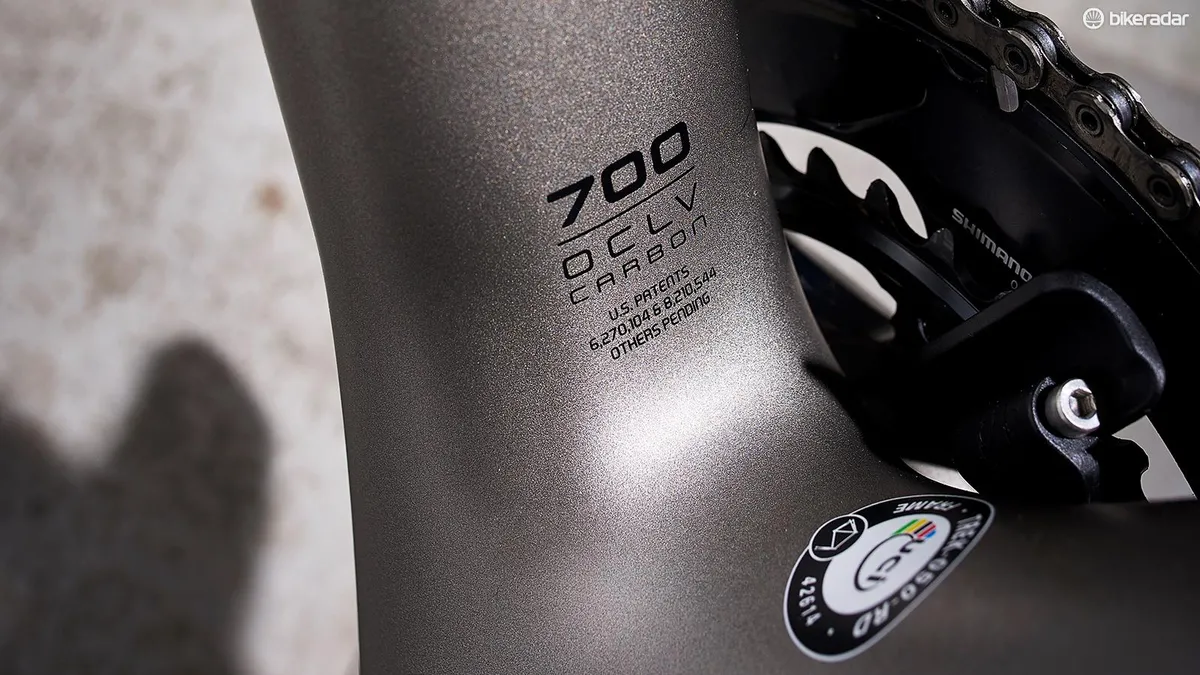Trek’s Émonda was conceived to be the brand’s lightweight race bike. It’s the model that was favoured by Alberto Contador, who rode the rim-braked version at this year’s Vuelta a España.
- The Trek Émonda is one of our key bikes for 2018. We've collated eleven bikes that we believe you should know about in the coming year. Some are super bikes, while others might display great value for money, but they all have one thing in common — they're all important bikes that show how incredibly varied road and mountain biking is today.
The Project One on the roads of Peille
It’s no surprise that a bike with a frame that weighs 644g was Contador's preferred ride for his farewell grand tour, as the race followed a route littered with tough climbs. But the model on test here is the disc-brake version and we all know disc-brake bikes are heavy, right?
Wrong, the Émonda Disc SLR frame shatters that misconception, weighing in at 665g. Add in the thru-axle-equipped, flat-mount disc fork at 350g and you've got a chassis that's just 1,015g. And there aren’t many rim-braked bikes that can match that.

The curves and sculpted surfaces of the previous Émonda have been retained, but the fully built-up SLR Disc's weight of 6.65kg certainly shows that a lot has been going on under the skin, as the complete SLR Disc package is lighter than the previous rim-braked model. Its understated silver-grey paint and predominantly black components add up to a very subtle-looking superbike.
On big ascents and descents, the SLR Disc really shines. Up climbs the low weight of the chassis combined with the light wheelset — Bontrager Aeolus 3 hoops, weighing 668g (f) and 786g (r) — make for a bike that gains altitude fast.
The old Émonda always had handling chops in spades and this new one feels just as planted, which is no surprise as the same geometry has been carried over. Up front, the previous model could feel a little firm and buzzy over rougher surfaces, but the SLR Disc is much improved. A lot of that is down to the switch to 28mm tyres, which are perfectly shaped by the rims' 19.5mm internal width.
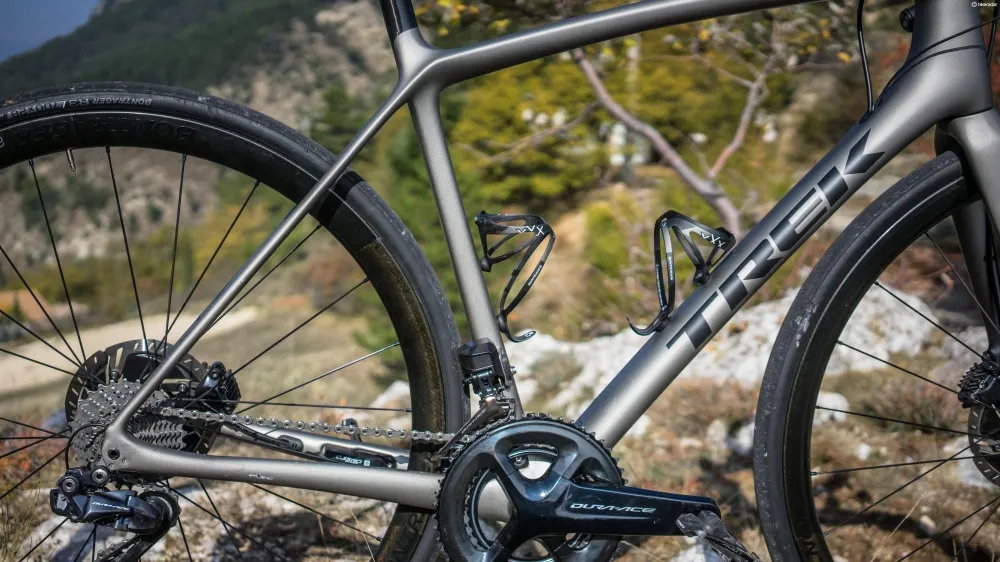
When it comes to losing altitude, those big tyres give the SLR Disc bags of grip in fast corners and I appreciate Trek's decision to go with 160mm rotors front and rear to complement the latest Dura-Ace hydraulic brakes. They provide plenty of feel at the lever, making it easy to get just the right amount of brake force.
As the test bike is a Project One machine it came with Trek’s lower and more aggressive H1 fit. Most of Trek’s bikes usually come in H2, which adds a little stack height and reduces the reach by a few millimetres. The position on the bike is lower than I’d usually ride but is one that encourages you to tuck in and push harder to go faster.

Like the front end, the SLR Disc's rear also feels firm. It’s certainly stiff, as no amount of mishandling could get the rear disc to do anything but go about its job. That stiffness does mean things can get choppy through the seat when you're speeding over rutted roads although the Bontrager Montrose saddle is well shaped, and its minimal padding manages to keep you comfortable.
The latest Dura-Ace Di2 impresses and the new hydraulic brakes feel like a big step forward too. I did manage to get the front rotor ticking after some particularly heavy braking at the bottom of a descent in the rain, but after a couple of miles the noise disappeared.

Overall, the Émonda SLR Disc is a wonderful example of a disc-braked race machine. Its understated appearance means this bike looks almost anonymous — its paint job hiding what is a truly special machine. If you’re the sort of rider who wants the very best but doesn’t want to shout about it, the Émonda SLR Disc is a fine choice.
BikeRadar would like to thank Brittany Ferries, the Commune of Peille, France, and Kieran Page at La Maison des Activities de Pleine Nature de Peille for their help and support during our Headline Bikes test.

